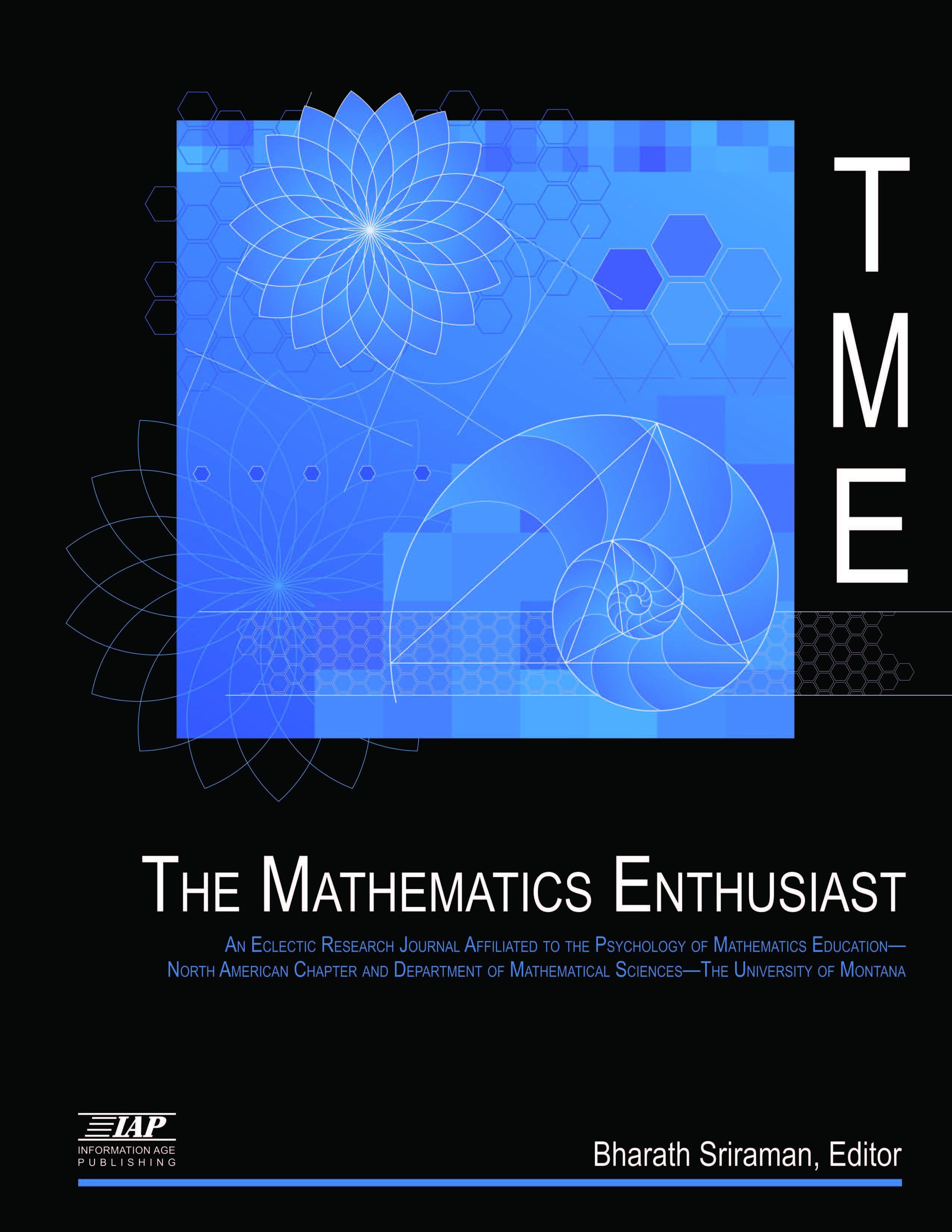
Volume
9
Issue
1-2
Abstract
Geometry is an integral component of secondary mathematics curriculum. From my experience in a mathematics teacher preparation program, I have seen a real push to connect geometry to other areas of mathematics. Secondary geometry can often be presented without clear or any connections to other areas of mathematics. One main purpose of this paper is to explore geometry and its rightful connection to other areas of mathematics, specifically number theory. Such strong emphasis is placed on drawing connections to number theory because of its intrinsic value in enhancing understanding of mathematical concepts. Learning number theory has positive ramifications for students, making the transition from arithmetic to an introduction to algebra. It helps “students develop better understandings of the abstract conceptual structure of whole numbers and integers,” and it has important algebraic characteristics, which relate to variables and mathematical reasoning (Campbell & Zazkis, 2006, p.28). Another purpose of this paper is to explore not only number theory as it relates to geometry, but also the basic history of number theory. Number theory has a beauty, accessibility, history, formal and cognitive nature, and intrinsic merits all to its own (Campbell & Zazkis, 2006, p. 13). For the sake of all the intrigue of number theory, I have a desire to learn more about it to fuel my own pursuit of a better understanding of effectively teaching mathematics, but also to use it to encourage and engage students in their personal pursuit of mathematical understanding.
First Page
193
Last Page
206
Recommended Citation
Wagner, Megan
(2012)
"Number Theory and the Queen of Mathematics,"
The Mathematics Enthusiast: Vol. 9
:
No.
1
, Article 9.
DOI: https://doi.org/10.54870/1551-3440.1240
Available at:
https://scholarworks.umt.edu/tme/vol9/iss1/9
Digital Object Identifier (DOI)
10.54870/1551-3440.1240
